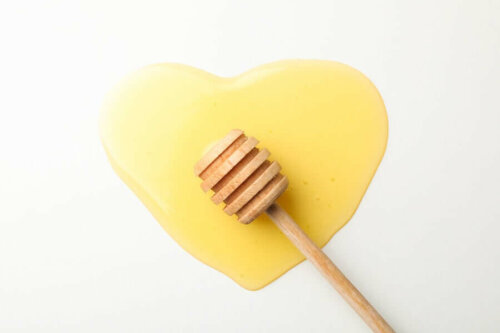Four Effective Treatments for Vaginal Itching

According to MSD Manual experts, “vaginal itching occurs when your vagina (the birth canal) or the area outside the opening of the vagina (called the vulva) feels irritated and itchy.”
Below, we will tell you more about it and present 4 ways to alleviate it. However, you should note that these options shouldn’t replace medical treatment and, therefore, you should see your gynecologist and follow their instructions while maintaining good lifestyle habits.
Causes of vaginal itching
First things first, we need to clearly define what causes vaginal itching and what the most common triggers are. This way you’ll know how to identify this sensation.
Vaginal itching is one of the most unpleasant situations that women can find themselves in regularly. Itching or irritation in the zone around the vagina could be from bacteria or fungal infections, menopause, sexually transmitted diseases, or chemical irritants.
In addition to vaginal itching, some women also might experience reddening, swelling, and unpleasant odors. To prevent this from happening, women need to maintain proper hygiene and follow a healthy diet.
Read all about how Rosemary Extract Fights Cellulite
Four treatments for vaginal itching
The discomfort caused by this problem makes many women look for natural solutions. However, it’s important to note that this information is informative. Furthermore, you should consult a specialist to treat the root of the problem.
Notwithstanding the above, popular beliefs made use of the properties of the following ingredients. However, the vagina is one of the most delicate parts of the body. Therefore, today there are discrepancies about their use for safety reasons.
We’ll explain what they are, why people believe them to be useful and the current affairs on their effectiveness.
1. Honey

Honey contains a variety of curative properties. When vaginal itching causes burning and itching, you should know that honey is useful for relieving those symptoms and fighting infections. Along these lines, research published in 2017 by the Journal de Mycologie Médicale conducted an experiment with 80 women to test a vaginal ointment made with honey. The results were satisfactory and scientists concluded it could indeed be useful as a natural treatment for symptoms of candidiasis (vaginal yeast infection).
Before applying any cream you find on the market with honey, consult your gynecologist first. This way you’ll avoid adverse reactions and complications.
Read about these Nine Things That Will Result from Eating Honey Daily
2. Chamomile tea
Chamomile has anti-inflammatory and soothing properties, sitz baths with its infusion are recommended in the field of alternative medicine to relieve discomfort in the intimate area. It’s important to always perform these baths after consulting your doctor.
3. Cold packs

According to MSD Manual experts, putting ice packs on the vulva can help relieve vaginal itching. Always wrapped in sterile gauze so as not to burn the skin. However, you shouldn’t leave it on for too long.
They also indicate that “if the itching doesn’t improve, physicians may suggest medication (such as a corticosteroid cream).”
4. Rosemary leaves
Though you might think it sounds a little crazy, you’d be surprised. Rosemary leaves stop bacterial growth on the skin. You can use them to make an antibacterial solution that’ll also double as a source of relief for the itching.
Although further research is still needed, a study published in Revista de Fitomedicina argues it could be an alternative treatment to the side effects of metronidazole (the most commonly prescribed drug for these conditions).
Is garlic one of the treatments for vaginal itching?
The allicin that’s found in garlic boasts antibacterial and antibiotic properties that kill the yeast that causes itching and other problems. However, the truth is that its use in this sense is dangerous to your health and far from reality.
A study was conducted at Isfahan University of Medical Sciences in Iran with 64 cases of women. Half of them used garlic and thyme ointment to relieve the symptoms of vaginitis. However, despite generating some positive results, the main side effects were related to increased itching. Therefore, garlic isn’t a good choice to relieve vaginal itching.
All cited sources were thoroughly reviewed by our team to ensure their quality, reliability, currency, and validity. The bibliography of this article was considered reliable and of academic or scientific accuracy.
- Ankri, S., & Mirelman, D. (1999). Antimicrobial properties of allicin from garlic. Microbes and Infection. https://doi.org/10.1016/S1286-4579(99)80003-3.
- Foster, D. C. (1993). Vulvitis and vaginitis. Current Opinion in Obstetrics & Gynecology, 5(6), 726–732.
- Hardy, L., Cerca, N., Jespers, V., Vaneechoutte, M., & Crucitti, T. (2017). Bacterial biofilms in the vagina. Research in Microbiology. https://doi.org/10.1016/j.resmic.2017.02.001
- Banaeian, S., Sereshti, M., Rafieian, M., Farahbod, F., y Kheiri, S. (2017). Comparación de la pomada vaginal de miel y clotrimazol para el tratamiento de la candidiasis vulvovaginal: un ensayo clínico aleatorio. Revista de Micología Médicale, 27 (4), 494–500. https://doi.org/10.1016/j.mycmed.2017.07.003.
- Backus KV, Muzny CA, Beauchamps LS. Trichomonas vaginalis Treated With Boric Acid in a Metronidazole Allergic Female. Sex Transm Dis. 2017;44(2):120. doi:10.1097/OLQ.0000000000000559.
- Mashburn, J. (2012). Actualización de infecciones vaginales. Journal of Midwifery & Women’s Health, 57 (6), 629–634. https://doi.org/10.1111/j.1542-2011.2012.00246.x.
- Simbar, M., Azarbad, Z., Mojab, F. y Alavi Majd, H. (2008). Un estudio comparativo de los efectos terapéuticos de la crema vaginal Zataria multiflora y el gel vaginal de metronidazol en la vaginosis bacteriana. Fitomedicina, 15 (12), 1025-1031. https://doi.org/10.1016/j.phymed.2008.08.004.
- Bahadoran, P., Rokni, FK y Fahami, F. (2010). Investigar el efecto terapéutico de la crema vaginal que contiene ajo y tomillo en comparación con la crema de clotrimazol para el tratamiento de la vaginitis micótica. Revista iraní de investigación en enfermería y partería , 15 (Supl. 1), 343–349.
This text is provided for informational purposes only and does not replace consultation with a professional. If in doubt, consult your specialist.








